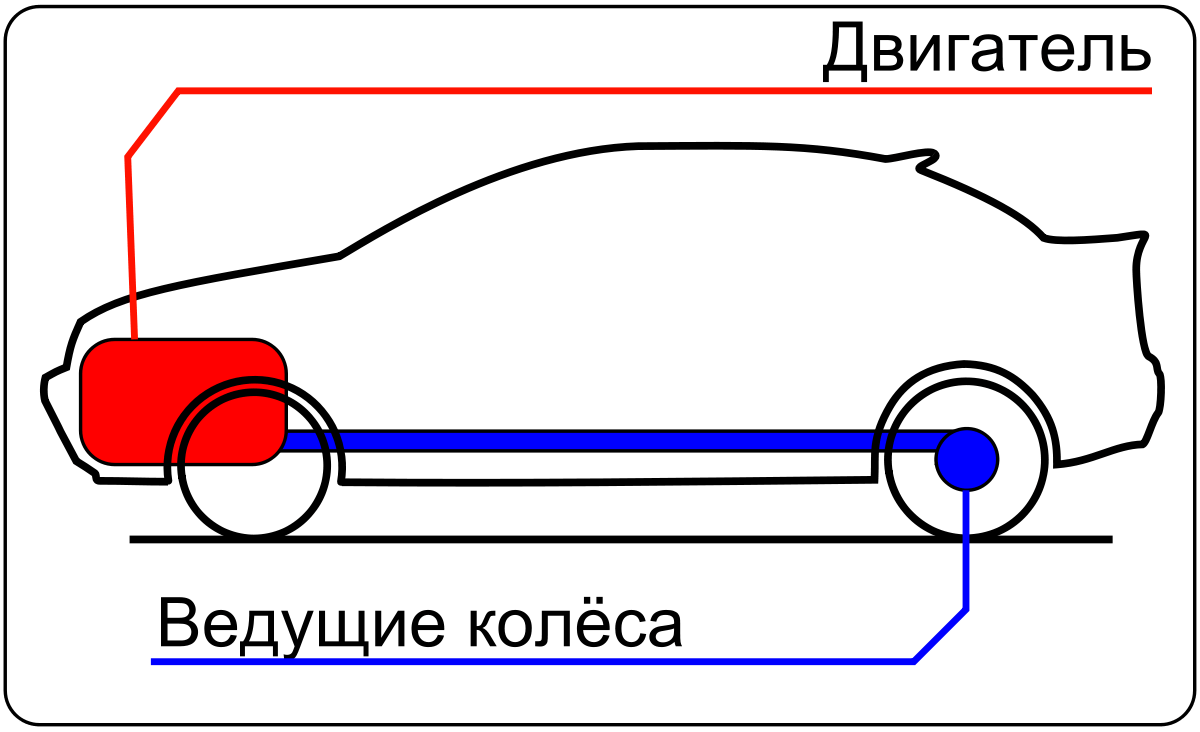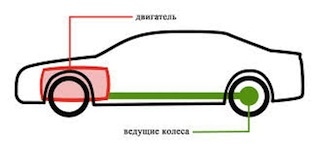
What is a rear wheel drive car
If the torque generated by the engine is transmitted to the rear axle, then this transmission design is called rear-wheel drive. In modern cars, rear-wheel drive is much less common than front-wheel drive or all-wheel drive options, but despite this, the rear-wheel drive type is considered a classic torque redistribution scheme, since the first cars used rear-wheel drive.

Until now, disputes over the choice of a rear-, front- or all-wheel drive car have not subsided. It is difficult to understand this issue, it all depends on the preferences of the driver, the conditions of use and the type of car. Popular rumor has long been saying that it is best to buy a front-wheel drive car or an all-wheel drive powerful crossover. However, the giants of the automotive industry - Mercedes, BMW, Porsche, Toyota and others, for some reason, equip their most charged versions of cars with driving rear wheels, even despite the fact that front-wheel drive cars are cheaper to manufacture:
- for front-wheel drive, a cardan is not needed to transmit torque to the rear axle;
- the rear axle is lightweight, without a gearbox;
- the design of the power unit is simpler and is mounted almost assembled - with a gearbox, axle shafts and hubs.
In addition, for a simple motorist who uses the car for his daily business, front-wheel drive is enough.
But, rear-wheel drive has its advantages, because of which it is still being used, and not just anywhere, but in Formula 1 races, and cars with a leading rear axle claim to be the most powerful, prestigious and fastest cars.

Rear wheel drive advantages:
- vibrations from the engine are practically not transmitted to the body due to the fact that the power unit and gearbox are suspended on soft and elastic cushions, hence the increased comfort, and such cars are cheaper to repair;
- during acceleration, reactive moments are not transmitted to the steering wheel;
- the rear wheels slip less due to the distribution of weight on the rear;
- optimal distribution of the load on the wheels - rear drive, front guides.
Cons of rear-wheel drive cars:
- the design is more complicated - a tunnel passes through the cabin to accommodate the cardan, respectively, the usable area of \uXNUMXb\uXNUMXbthe cabin is reduced;
- there are some nuances that complicate management, especially on slippery slopes;
- patency is worse on dirty and snowy roads.
Thus, in the city there is no fundamental difference what type of drive to use, but if you like speed and power, then rear-wheel drive is your choice.
Loading…